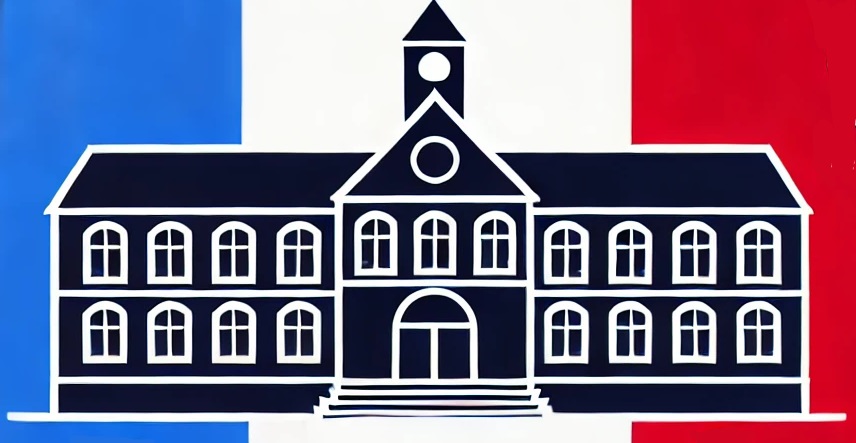How do schools work in France?
The French school system offers education to children from the age of three up to higher education. There are four main stages: école maternelle (preschool), école élémentaire (elementary school), collège (middle school), and lycée (high school). Schooling is compulsory from age 3 to 16, though most students continue their studies until age 18.
École Maternelle (Preschool)
Preschool, or école maternelle, is for children aged 2 to 5. School used to be compulsory from the age of 6 in France, but since 2019 it’s compulsory from the age of 3. Even a quarter of the French two year olds already attend preschool. This stage focuses on developing children’s social skills, motor skills, language abilities, and early cognitive learning. There are three levels: petite section (age 3), moyenne section (age 4), and grande section (age 5).
École Élémentaire (Elementary School)
From ages 6 to 11, students attend école élémentaire, which covers grades CP (cours préparatoire) to CM2 (cours moyen 2). The curriculum includes French language, mathematics, history, geography, physical education, and the introduction of a foreign language, usually English. By the end of elementary school, students are expected to have acquired strong foundational knowledge, particularly in reading, writing, and arithmetic.
Collège (Middle School)
From age 11 to 15, students move on to collège, which consists of four years: sixième (6th grade), cinquième (7th grade), quatrième (8th grade), and troisième (9th grade). This stage provides a more structured and diverse curriculum, including subjects like mathematics, French, history, geography, science, technology, and physical education. Students also study a second foreign language. At the end of collège, students take the Diplôme National du Brevet (DNB), a national exam that evaluates their overall knowledge.
Lycée (High School)
Students aged 15 to 18 attend lycée, seconde (10th grade), première (11th grade), and terminale (12th grade). Lycee is dividend into three years. In lycée, students choose specialized paths in either general education (literature, science, or economics), technical education, or vocational training. The primary focus is preparing students for the Baccalauréat (Bac), a national exam that determines whether they are qualified for higher education. The Bac is divided into various streams, depending on the student’s focus of study. It is the equivalent of a high school diploma but with a more intense academic focus.
After the Baccalauréat some student can enroll directly into universities, but to be able to attend one of the prestigious schools in France, students have to prepare with classes préparatoires aux grandes écoles (CPGE) (Higher school preparatory classes). These take two year to up to four years. When looked at the work load, these study courses are one of the highest in Europe.
Enseignement supérieur (Higher Education)
After lycée, students can enter universities, grandes écoles (prestigious higher education institutions), or other technical institutes. Admission to grandes écoles is very competitive. French universities offer undergraduate (Licence), Master’s, and Doctoral programs.

